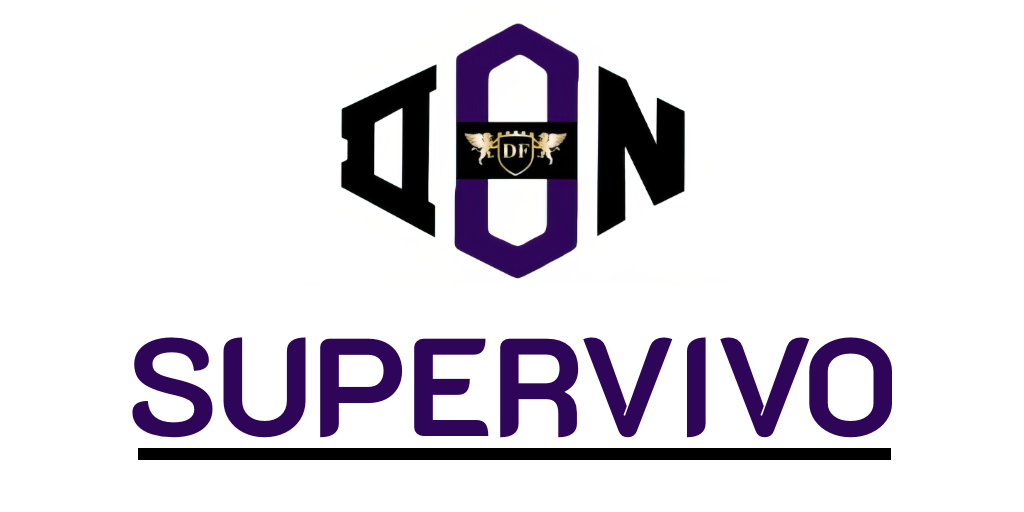In an era where effective teamwork is paramount, the question arises: which app simplifies your team collaboration? With the increasing shift towards remote work and the demand for effective tools that enhance productivity, businesses of all sizes are turning to software solutions. The best team collaboration software not only streamlines communication but also optimises project management, enabling teams to simplify team collaboration like never before. As we navigate through various options, it becomes clear that choosing the right app is essential for fostering an environment where collaboration can thrive.
Understanding Team Collaboration Tools
In today’s fast-paced work environment, understanding team collaboration tools is vital for any organisation aiming to thrive. A team collaboration app plays a significant role in streamlining workflow, enabling groups to communicate effectively, share resources, and manage various tasks collectively. These applications create a central hub where team members can converge, ensuring everyone stays aligned on goals and objectives.
What are Team Collaboration Apps?
A team collaboration app is a type of software designed to facilitate enhanced teamwork. These tools provide a range of features that support efficient team communication tools, allowing members to interact in real-time, share files, assign tasks, and maintain project visibility. By leveraging a comprehensive team collaboration app, organisations can foster a culture of cooperation and support, ultimately leading to improved outcomes.
The Importance of Effective Collaboration
The importance of effective collaboration cannot be overstated. When teams engage in collaborative efforts, they experience heightened productivity, greater creativity, and more rapid problem-solving capabilities. Research indicates that employing collaboration tools can lead to a significant increase in team efficiency, with statistics suggesting up to a 25% boost in productivity among users of such tools. These benefits underline the necessity for organisations to invest in robust solutions that enhance team dynamics.

Key Features of Top Team Collaboration Platforms
To maximise effectiveness in team projects, it’s essential to identify key features that distinguish the top team collaboration platforms. These features play a pivotal role in transforming team dynamics and enhancing productivity.
Real-Time Communication
Real-time communication serves as a cornerstone for modern collaboration. The ability to instantaneously message or conduct video calls facilitates seamless interaction among team members. This immediacy encourages engagement and addresses challenges without unnecessary delays. Whether it’s the best team collaboration software or a new entrant in the market, ensuring robust communication tools is vital for fostering a connected work environment.
Project Management Integration
Integrating project management capabilities within collaboration platforms allows for a holistic approach to managing tasks, deadlines, and resources. With this integration, teams can track progress in real time, ensuring everyone is aligned with project goals. Such functionality not only enhances workflow but directly contributes to improved team productivity software that keeps projects on track and within scope.
User-Friendly Interface
A user-friendly interface is crucial for any collaboration tool. An intuitive design reduces training time and promotes smoother adoption across teams. The easier it is for team members to navigate the platform, the more likely they are to use it effectively. Investing in software that prioritises user experience can lead to significant improvements in team engagement and productivity.
Which app simplifies your team collaboration?
In today’s fast-paced work environment, finding the right tools to enhance team collaboration becomes vital. Numerous popular collaboration apps exist, each with distinct features that cater to various needs. Selecting the right one ensures smooth communications and efficient workflows.
Overview of Popular Apps
Slack stands out as a robust platform for real-time messaging, allowing team members to engage effortlessly. With its integration capabilities, it serves as a hub for conversations and file sharing. Microsoft Teams appeals to organisations already utilising Office products, streamlining tasks with native integrations that enhance productivity. Asana brings focus to task management, establishing clear paths for teams to follow and ensuring everyone knows their responsibilities.
How They Enhance Workflow
Each of these popular collaboration apps contributes uniquely to team dynamics. Slack promotes an open line of communication, fostering a collaborative atmosphere.
- Microsoft Teams offers a seamless transition between chats and video calls, keeping conversations organised.
- Asana enhances project visibility by breaking down tasks, allowing teams to track progress effortlessly.
When considering which app simplifies your team collaboration?, evaluating these functionalities can guide your choice in selecting the perfect streamline team collaboration app. Each application holds distinct advantages that can significantly impact how your team operates.
Evaluating the Best Team Collaboration Software
When selecting a collaboration app, it is essential to consider various criteria that can significantly impact team dynamics and productivity. Evaluating team collaboration software entails assessing functionality, scalability, cost, and user experience. Furthermore, the ability to integrate with existing tools and ensuring robust security features cannot be overlooked. These factors play a vital role in determining which app will complement an organisation’s workflow.
Criteria for Choosing a Collaboration App
Key considerations in selecting the best team collaboration software include:
- Functionality: Assess how well the app meets essential collaboration needs, such as messaging, file sharing, and task management.
- Scalability: Consider whether the app can grow alongside your team and adapt to changing needs.
- Cost: Evaluate pricing models and whether they fit the budget while delivering adequate features.
- User Experience: Gather feedback from potential users regarding the app’s usability and interface design.
- Integration: Explore how easily the app integrates with other tools your team already uses to streamline processes.
- Security: Investigate the security measures in place to protect sensitive data and ensure compliance with industry standards.
Comparative Analysis of Leading Apps
A comparative analysis of leading apps reveals distinctive strengths and weaknesses that assist teams in making informed choices based on their specific needs. For instance, Trello stands out for its visual task management, enabling teams to track progress effortlessly. It may lack in communication features, which could be a disadvantage for teams needing extensive chatting capabilities. On the other hand, Zoom offers exceptional video conferencing tools, making remote meetings seamless yet lacks integrated task management functionalities. Understanding these nuances helps in identifying the most suitable collaboration app for enhanced productivity.
Benefits of Simplifying Team Collaboration
Simplifying team collaboration offers numerous advantages that can significantly transform the way organisations operate. By leveraging the right tools, teams unlock remarkable potential to improve team productivity software and foster enhanced communication.
Improved Team Productivity
A streamlined approach to collaboration allows teams to focus on core tasks, reducing the time spent navigating complex systems. Many organisations experience a dramatic increase in efficiency when they simplify processes, leading to quicker project completions. With the benefits of simplifying team collaboration firmly in place, employees can devote their energy to creativity and innovation rather than administrative hurdles.
Enhanced Communication
Effective collaboration tools break down barriers and promote a culture of transparency. Teams benefit from clear communication channels, which foster inclusivity and a sense of belonging among members regardless of their geographical locations. This enhanced communication not only aligns teams but also drives engagement, essential for thriving work environments.
Efficient Team Communication Tools
In today’s fast-paced work environment, having efficient team communication tools proves essential for productivity and collaboration. Selecting the right tools can vastly enhance workflow and foster team connections. Understanding the features to look for can significantly impact the effectiveness of your communication strategies.
Features to Look For
When assessing effective communication tools, prioritising certain functionalities can lead to better results. Key features to look for include:
- Robust Messaging Capabilities: Instant messaging and team chat features support quick interactivity.
- Video Conferencing Options: Virtual meetings should be seamless, offering high-quality audio and video connections.
- File Sharing Integration: The ability to share files and documents directly enhances collaboration without switching platforms.
- Project Management Integration: It’s beneficial to use tools that can link with project management software, creating a unified workspace.
Examples of Effective Communication Tools
Several communication tools stand out in the industry for their innovative features. Notable examples include:
- Zoom: Renowned for its video conferencing capabilities, offering functionalities that extend beyond simple calls.
- Slack: A popular choice for teams seeking instant messaging features, reducing delays and fostering open dialogue.
- Microsoft Teams: Integrates with Office 365, providing a comprehensive solution for communication and collaboration.
- Trello: While primarily a project management application, it offers communication features that keep teams aligned.
Streamline Team Collaboration App Options
In today’s fast-paced work environment, selecting the right tools is essential for effective team collaboration. A variety of apps that lead the market have emerged to aid organisations in streamlining their teamwork. These tools cater to different needs, enabling teams to enhance productivity and communication significantly. Understanding the unique features of these applications assists in choosing the right app tailored to specific organisational requirements.
Apps That Lead the Market
Several applications stand out in the crowded landscape of collaboration tools. Popular choices include:
- Basecamp: Known for its simplicity and comprehensive project management features.
- Monday.com: Offers robust flexibility and customisation for diverse team structures.
- ClickUp: Provides an all-in-one suite that combines task management with time tracking and reporting.
Each of these options comes with its distinct advantages, pricing models, and levels of user support, making them suitable for different organisational sizes and industries.
Choosing the Right App for Your Needs
When choosing the right app, it’s crucial to assess the specific needs of your team. Consider the following factors:
- Team size and structure
- Collaboration features required
- Budget constraints
- Scalability options for future growth
By analysing these aspects, you can streamline team collaboration app options effectively, ensuring that your chosen application aligns with your organisation’s strategic goals.
Maximising Collaboration with Technology
In today’s fast-paced business environment, maximising collaboration with technology is crucial for organisations striving to thrive. By adopting the right collaboration technology, teams can enhance communication, streamline workflows, and ultimately increase productivity. Tools such as Microsoft Teams, Slack, and Asana empower employees to connect seamlessly, ensuring that everyone is on the same page, regardless of location.
Moreover, effective utilisation of these platforms can foster a culture of continuous improvement and adaptability. When teams regularly assess their collaboration strategies and the software they employ, they position themselves to respond to changes in the market swiftly. This proactive approach not only keeps organisations competitive but also enhances team morale and engagement.
By integrating complementary tools and regularly updating their methods, companies can establish a more robust framework for collaboration. The focus on improving collaboration through technology allows organisations to achieve better business outcomes, ensuring that their teams are equipped to face challenges head-on while enjoying enhanced professional satisfaction.









